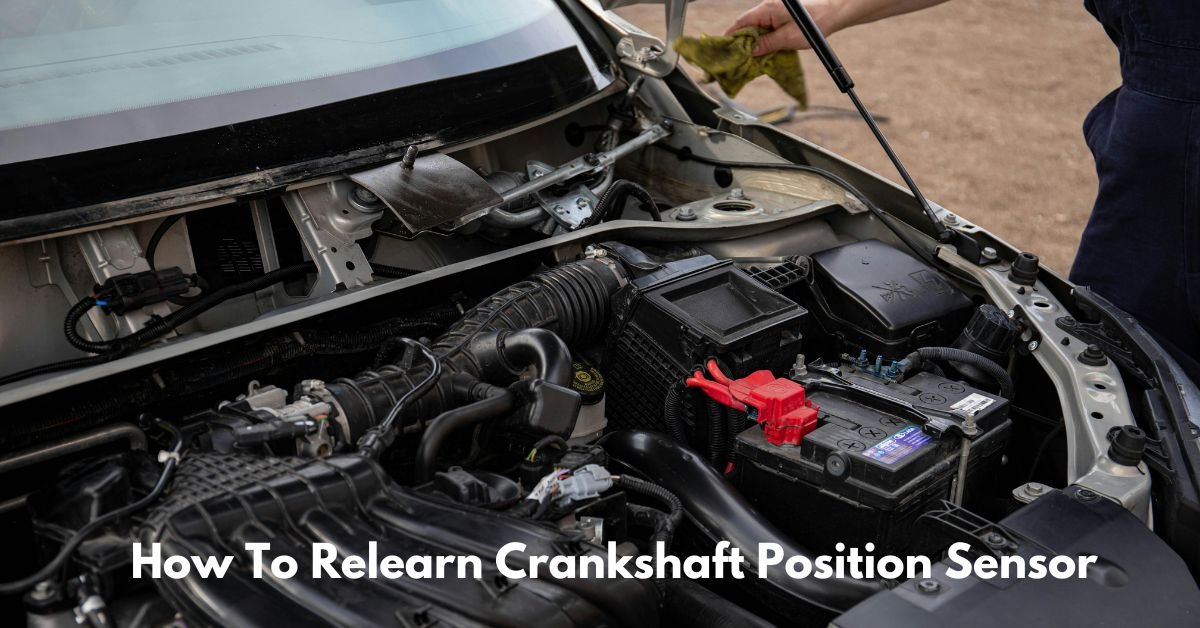The crankshaft position sensor (CPS) is a critical component in modern engines. It monitors the rotation speed and position of the crankshaft, helping the engine control unit (ECU) regulate fuel injection, ignition timing, and more. Sometimes, after replacing the crankshaft position sensor or performing repairs, the ECU needs to be reset or “relearned” to ensure it accurately communicates with the new sensor. This process is known as the “relearn” procedure.
If you’re facing issues with your engine’s performance, or if you’ve recently replaced the crankshaft position sensor, you may need to perform a relearn. This guide will walk you through the steps to properly relearn a crankshaft position sensor and get your vehicle running smoothly again.
Title: How to Relearn a Crankshaft Position Sensor: A Step-by-Step Guide
1. Why is the Crankshaft Position Sensor Important?
Before diving into the relearn process, it’s essential to understand the role the crankshaft position sensor plays in your vehicle. The sensor monitors the rotation of the crankshaft, which is critical for ensuring the engine operates correctly. The engine’s ECU uses the data from the sensor to:
- Control ignition timing
- Regulate fuel injectors
- Monitor engine speed
- Ensure the engine’s overall performance
If the crankshaft position sensor fails or is replaced, the ECU may lose its ability to read the sensor accurately, resulting in poor engine performance or a check engine light. This is where the relearn procedure comes into play.
2. When Should You Relearn the Crankshaft Position Sensor?
Relearning the crankshaft position sensor may be required in the following circumstances:
- Sensor Replacement: If you’ve replaced the crankshaft position sensor due to a failure, it may need to be relearned by the ECU.
- Timing Adjustments: If you’ve done engine repairs or maintenance that affects timing, such as replacing the timing belt, the ECU may need to relearn the new position of the crankshaft.
- Check Engine Light: If your vehicle’s check engine light is on due to a crankshaft sensor issue, performing a relearn could resolve the problem.
3. How to Relearn a Crankshaft Position Sensor
Relearning the crankshaft position sensor isn’t always a complex process, but it may require the use of a scan tool or code reader. Below are the general steps to perform a crankshaft position sensor relearn:
1. Preparation
- Ensure Safety: Park your car on a level surface, engage the parking brake, and disconnect the negative battery terminal to avoid electrical issues.
- Tools You’ll Need: A diagnostic scan tool (OBD-II scanner) that is capable of performing a crankshaft position sensor relearn procedure. Verify that the tool works with the make and model of your car.
2. Start the Vehicle
- Reconnect the battery and start the vehicle. Let it run for a few minutes to ensure the engine is at normal operating temperature.
- Check for Codes: Before proceeding, use the diagnostic scan tool to check for any fault codes related to the crankshaft position sensor. This step helps you verify whether the sensor is the root cause of the problem.
Must Read: What Causes A Crankshaft Sensor To Go Bad?

3. Perform the Relearn
- Using the Scan Tool: Once you’ve confirmed that the sensor needs to be relearned, follow the instructions provided by your diagnostic scan tool to initiate the relearn procedure. Typically, this involves selecting the relearn option in the tool’s menu and following prompts.
- Manual Relearn: In some cases, the ECU can relearn the crankshaft position sensor without a scan tool. To do this, turn the ignition key to the “on” position (without starting the engine) and leave it there for about 10 minutes. Then, turn the ignition off, wait a few seconds, and start the engine. The ECU may automatically relearn the sensor position during this process.
4. Test Drive
- After the relearn procedure is complete, take the vehicle for a short test drive to ensure the sensor is functioning correctly. During the test drive, monitor the engine’s performance. If the check engine light remains off and the engine runs smoothly, the procedure has likely been successful.
- Clear Codes: If your scanner displays any fault codes, use it to clear them. If the codes reappear, there may be an underlying issue with the sensor or wiring that needs further investigation.
4. Common Issues and Troubleshooting Tips
Sometimes the relearn procedure may not go as planned. The following are some typical problems you may run into:
- Check Engine Light Stays On: If the check engine light remains illuminated after the relearn, double-check the sensor installation and wiring. Faulty wiring or a defective replacement sensor could be to blame.
- No Relearn Option Available: Not all vehicles require or support a relearn procedure, and some vehicles may automatically adjust to the new sensor. Check your vehicle’s service manual or consult with a professional if you’re unsure.
- Engine Hesitation or Stalling: If the vehicle hesitates or stalls after performing the relearn procedure, it could indicate a deeper issue with the sensor, timing, or ECU calibration.
Conclusion
Relearning a crankshaft position sensor is an essential step after replacing the sensor or performing significant engine repairs. It ensures that the engine control unit communicates effectively with the sensor, restoring proper engine performance and eliminating potential drivability issues.
By following the proper steps and using the right tools, you can successfully complete the relearn process yourself. However, if you encounter issues or are unsure about performing the procedure, it’s always a good idea to consult with a professional mechanic who can assist you further.
Remember, regular maintenance and prompt attention to sensor issues can help ensure your engine runs smoothly for years to come!
